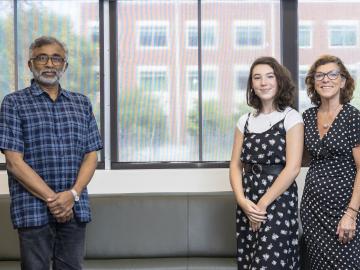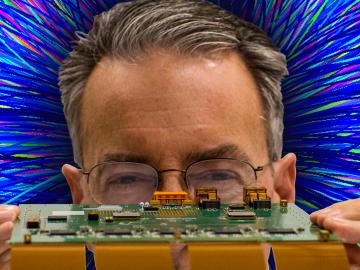
Filter News
Area of Research
- Advanced Manufacturing (2)
- Biology and Environment (36)
- Clean Energy (56)
- Computational Biology (1)
- Fusion and Fission (17)
- Fusion Energy (2)
- Isotopes (11)
- Materials (37)
- Materials for Computing (8)
- National Security (10)
- Neutron Science (19)
- Nuclear Science and Technology (15)
- Quantum information Science (5)
- Supercomputing (33)
News Type
News Topics
- 3-D Printing/Advanced Manufacturing (24)
- Advanced Reactors (7)
- Artificial Intelligence (11)
- Big Data (9)
- Bioenergy (16)
- Biology (19)
- Biomedical (18)
- Biotechnology (4)
- Buildings (3)
- Chemical Sciences (9)
- Clean Water (5)
- Climate Change (7)
- Composites (2)
- Computer Science (40)
- Coronavirus (17)
- Cybersecurity (6)
- Decarbonization (3)
- Energy Storage (17)
- Environment (36)
- Exascale Computing (4)
- Frontier (2)
- Fusion (16)
- Grid (5)
- High-Performance Computing (12)
- Isotopes (12)
- ITER (2)
- Machine Learning (3)
- Materials (11)
- Materials Science (27)
- Mathematics (2)
- Mercury (4)
- Microscopy (10)
- Molten Salt (1)
- Nanotechnology (15)
- National Security (7)
- Neutron Science (23)
- Nuclear Energy (27)
- Physics (12)
- Polymers (5)
- Quantum Computing (2)
- Quantum Science (14)
- Security (5)
- Space Exploration (2)
- Summit (12)
- Sustainable Energy (15)
- Transformational Challenge Reactor (3)
- Transportation (14)
Media Contacts

Research by an international team led by Duke University and the Department of Energy’s Oak Ridge National Laboratory scientists could speed the way to safer rechargeable batteries for consumer electronics such as laptops and cellphones.

Bearden High School senior Christiane Marie Alvarez has been named recipient of the 2020 UT-Battelle Scholarship to attend the University of Tennessee (UT).

With the rise of the global pandemic, Omar Demerdash, a Liane B. Russell Distinguished Staff Fellow at ORNL since 2018, has become laser-focused on potential avenues to COVID-19 therapies.

With Tennessee schools online for the rest of the school year, researchers at ORNL are making remote learning more engaging by “Zooming” into virtual classrooms to tell students about their science and their work at a national laboratory.

In the fight against the COVID-19 pandemic, it’s a race against the clock not only to find a vaccine but also to supply healthcare workers with life-saving equipment such as face shields, masks and test kits.

While some of her earth system modeling colleagues at ORNL face challenges such as processor allocation or debugging code, Verity Salmon prepares for mosquito swarms and the possibility of grizzly bears.

For a gargantuan nuclear physics experiment that will generate big data at unprecedented rates—called A Large Ion Collider Experiment, or ALICE.

Suman Debnath, a researcher at ORNL, has been elevated to the grade of senior member of the Institute of Electrical and Electronics Engineers (IEEE).

In the early 2000s, high-performance computing experts repurposed GPUs — common video game console components used to speed up image rendering and other time-consuming tasks

Researchers at the Department of Energy’s Oak Ridge National Laboratory (ORNL) in late February demonstrated a 20-kilowatt bi-directional wireless charging system installed on a UPS medium-duty, plug-in hybrid electric delivery truck.


